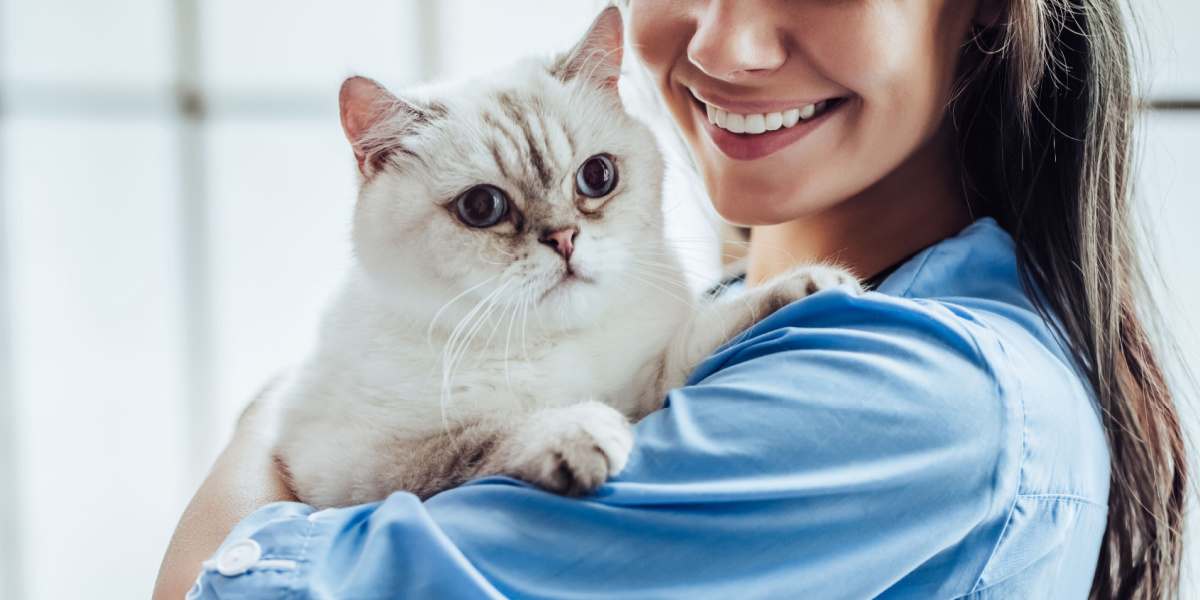
Buprenorphine is one of the most common analgesic pain medications prescribed for cats, especially for short term use following a procedure or painful injury.
Buprenorphine For Cats Overview

In this article, you’ll learn more about buprenorphine, how it’s used, and effects it causes in kitties.
What Is Buprenorphine for Cats?
Buprenorphine is what is called a partial mu-opioid agonist. What does this mean?
Opioid drugs are simply those that can bind to opioid receptors throughout the body. There are four recognized opioid receptors throughout the body most of which have Greek letter designations: mu, kappa, delta, and opioid-like receptor 1 (ORL-1).
Individual opioid drugs can bind to these receptors differently. Some have a strong affinity for the mu receptor and less affinity for kappa, for example. A full agonist means that the drug binds to the particular receptor very tightly. A partial agonist binds less tightly.
This does not mean that a partial agonist is “weaker” than a full agonist. In fact, at certain doses, we can see similar effects of pain relief. But at higher doses, a full agonist will have more pain relief activity, whereas a partial agonist’s pain relief effect plateaus, and we can instead see more adverse effects.
But at appropriately prescribed doses, a partial mu-opioid agonist like buprenorphine generally demonstrates fewer adverse effects than a full mu agonist like morphine or fentanyl. In most animals buprenorphine is not as effective for pain relief as other opioid drugs, but cats seem to have a special affinity for it, making it a very common pain relief option for them.
Also Read: What Can You Give A Cat For Pain? 6 Vet-Recommended Options
What Does Buprenorphine Do for Cats?
Buprenorphine is used primarily for pain control in cats. Compared to other opioid medications, cats appear to get better pain relief from buprenorphine than other animal species, while keeping the typical side effects seen with most opioids low.
Some examples of situations where buprenorphine is used include surgical procedures like spays and neuters, dental procedures involving tooth extraction, painful injuries like bite wounds or other trauma, and urinary tract conditions causing pain and difficulty urinating collectively known as feline lower urinary tract disease (FLUTD).
The Different Forms of Buprenorphine for Cats
In the veterinary medicine setting, only a liquid form of buprenorphine is typically used. However, liquid buprenorphine does come in three main different preparations.
The first is Buprenex, which is a brand name for the most standard formulation of buprenorphine used in both human and veterinary medicine.
When used in cats, Buprenex is versatile in that it can be given as an injectable at the veterinary clinic, but the same form can also be given by a special route called the buccal or oral transmucosal (OTM) route.
The oral transmucosal route means that Buprenex can be very readily absorbed by the oral tissues inside a cat’s mouth, especially under the tongue or pouches of the cheeks.
This can be a very attractive administration route for kitty parents at home, because this means a cat doesn’t have to actually swallow the medication. As long as it gets in the mouth, a majority of it is typically absorbed.
This absorption route more specific to cats provides a comparable level of pain relief to the injectible routes, though the time to peak effectiveness may take a little longer.
This form typically provides about 12 hours of pain relief for cats, though some vets may prescribe it for every 6 or 8 hours depending on the patient and circumstances.
The second form of buprenorphine is a product called Simbadol, which is labeled specifically for cats. Simbadol is a higher concentration of buprenorphine and when injected under the skin by a veterinarian, can last for up to 24 hours. It can be given off-label by other routes as well including the buccal/OTM route, but will then have a duration that’s much shorter and comparable to Buprenex.
The third form is a patented compounded formulation by ZooPharm called Bup SR. Bup SR can only be given as an injection under the skin by a veterinarian, but can provide pain relief for up to 48 hours.
Side Effects Of Buprenorphine
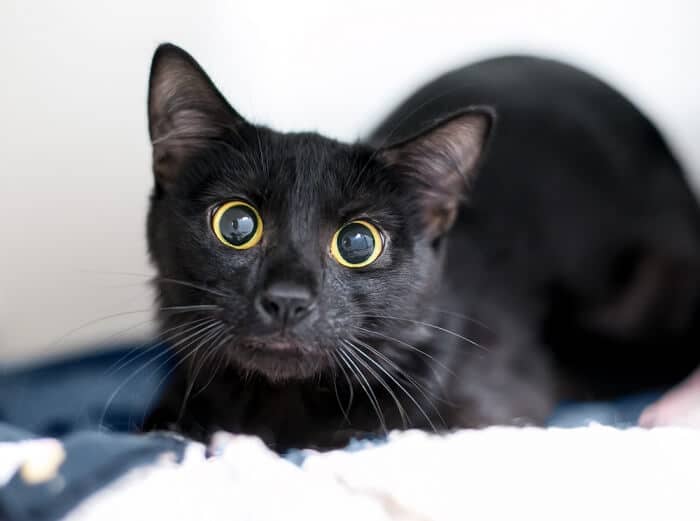
Cats’ pupils often become very dilated after treatment with buprenorphine. They may also exhibit behavioral changes like increased purring, rubbing on things, and hyperactivity.
There are some common side effects we may expect to see with buprenorphine in cats. Typically, their pupils get very dilated, which is an effect called mydriasis. Most cats will then also exhibit some behavioral changes including excessive purring, rubbing on things, pacing around, and hyperactivity.
These effects are typically mild, manageable, and even a little humorous, as your precious feline becomes overly lovey-dovey and tries to rub his head and neck on everything in sight.
In uncommon cases, these effects can be more pronounced leading some cats to become more agitated, disoriented, and restless. Rarely, some kitties may also exhibit gastrointestinal signs like vomiting, drooling, a decreased appetite, and an elevated body temperature.
Buprenorphine can also cause sedation in some cats, causing them to do little more than space out on their favorite spot on the couch or bed at home.
While more an effect veterinary professionals monitor for when buprenorphine is given as an injectable in the clinic, it is important to monitor for signs of respiratory depression, especially in the case of an accidental overdose at home. This can look like very slow, shallow breaths.
If any really concerning effects after a dose of buprenorphine are seen or if a mistakenly higher dose or extra dose was given, make sure to call your vet. Most of the time, any adverse effects will wear off with time and your vet may adjust the dosage. If warranted, most vets do carry the opioid drug reversal agent naloxone in the event of a true emergency.
Buprenorphine for Cats: Dosage and Administration
The dosage for buprenorphine can vary widely based on a cat’s weight, the degree of pain or discomfort being treated, and the form of buprenorphine being used. The concentration of Simbadol for example, is about six times greater than Buprenex, meaning that the same volume of liquid given for each form will have very different levels of potency.
This is why only your veterinarian should provide dosing instructions and your cat’s prescription label should be followed exactly. If you have any questions regarding dosage amounts, make sure to give your vet a call.
How To Administer Buprenorphine for Cats
When sent home, buprenorphine will always be given orally with a needle-free oral dosing syringe provided by your vet. The easiest way to administer buprenorphine by the oral transmucosal route is to insert the tip of the oral dosing syringe into the corner of your kitty’s mouth.
This will prompt a cat to open her mouth at which point you squirt the (typically small) volume of liquid into the mouth. Ideally, we aim for under the tongue or the cheek pouch, but as long as it gets in the mouth, a majority of the volume will be absorbed.
Concluding Thoughts on Buprenorphine
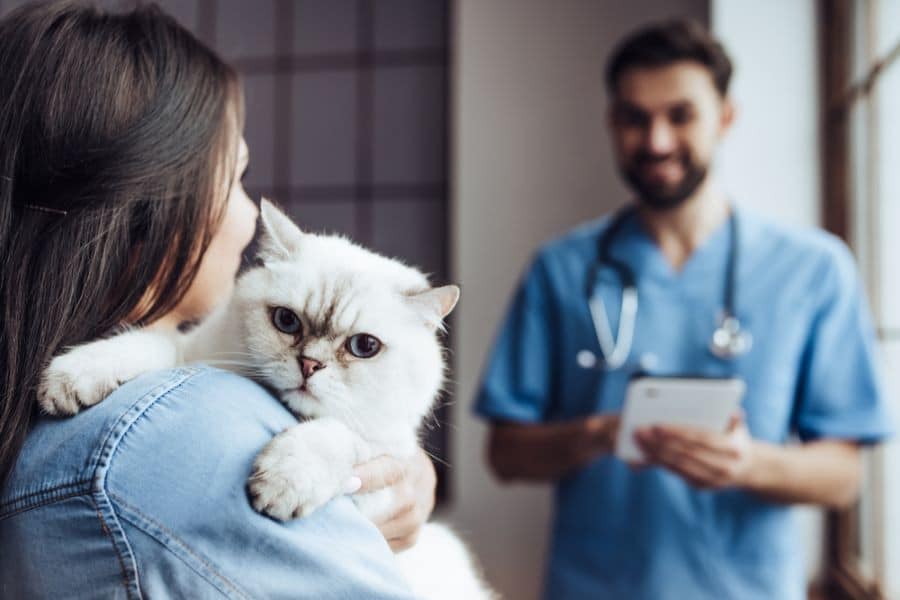
When used properly, buprenorphine can be a safe and effective pain reliever.
When used as prescribed by a veterinarian, buprenorphine is a safe and effective pain reliever in cats.
As a scheduled controlled substance, it does require strict inventory monitoring by vet clinics and there can be severe legal ramifications with misuse. For this reason, an exam is typically required for it to be dispensed and your vet may not allow it to be refilled without a recheck exam.
Buprenorphine is typically used for acute pain and is not given for more than a few days at a time both for economic reasons as well as practicality. Chronic pain conditions in cats are usually managed using different medications, like gabapentin.
Frequently Asked Questions
Does Buprenorphine Make Cats High?
In a sense, yes. When opioid drugs bind to opioid receptors, this helps to moderate pain receptors, but can also lead to a state of euphoria, as well as sedation. It is common therefore to see cats on buprenorphine have dilated pupils, and show signs of excessive purring and affection. Some cats will appear to be really “chill” on buprenorphine, while others may become hyperactive.
How Long Can Cats Take Buprenorphine?
Most cats will be prescribed buprenorphine for less than one week, typically about 3-5 days. In some cases, such as for persistent urinary conditions causing pain and difficulty when urinating, buprenorphine may be refilled at your veterinarian’s discretion. One study from the Journal of Veterinary Pharmacology and Therapeutics from 2015 found that high doses of buprenorphine were well tolerated in young cats when given for 9 consecutive days, suggesting that even a full week of buprenorphine at commonly prescribed doses is safe and well tolerated by most cats.
Does buprenorphine for cats need to be refrigerated?
Buprenorphine should be Stored at room temperature between 18°C and 26°C (64°F and 79°F) and protected from direct heat above 42°C (107°F), and freezing



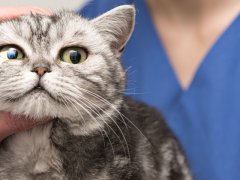
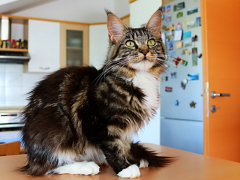
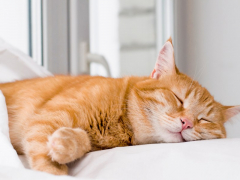
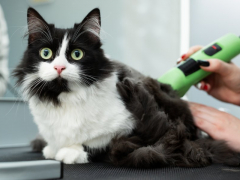
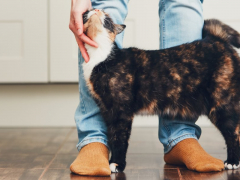
One of my cats lost her appetite and didn’t eat anything for 7 days after surgery and injection of Buprenorphine, and it happened again when she had her teeth cleaned a year later. Last week, another of my cats had her teeth cleaned with two teeth pulled, followed by an injection of Buprenorphine that was to control pain for three days. She, too, lost her appetite and acted like she was repulsed by food for 5 days. She was apparently nauseous. She was also agitated and would not sleep in her usual favorite places. I read here that side-effects are extremely rare. Why not tell the truth about Buprenorphine? it is dangerous for a cat to stop eating for several days. It can cause fatty liver disease. Cat owners need to know.
Hi Danielle,
Thanks for your comment. I’m sorry to hear of these experiences in your kitties.
But truthfully, such side effects of inappetence/anorexia are not seen routinely with use of buprenorphine itself. In fact, I’ve rarely gotten such a report from a kitty parent in many years of using it in different scenarios. If veterinarians were routinely seeing patients not eat for a week while using buprenorphine, we would all be greatly concerned. You are correct, if a kitty doesn’t eat sometimes for even 24-48 hours, there is risk of fatty liver disease.
The buprenorphine itself may not have caused the appetite issues primarily. Buprenorphine is often used in situations when cats are painful, undergoing anesthesia for procedures, or other situations that may greatly affect appetite.
I noticed that in all of the examples you provided, your kitties had anesthetic procedures. Anesthesia itself can often cause nausea and we do sometimes have concerns with kitties not eating well afterwards. Many veterinarians will pre-treat their anesthesia patients for nausea for that reason. Plus, coming into the hospital to have these procedures can be really stressful for many cats, prompting behavior changes at home, like hiding, poor litter box use, and poor appetite, for a few days. It is also possible sometimes, especially with a painful surgery or dental extractions, that the kitty may still be experiencing breakthrough pain even with buprenorphine use.
Nothing in medicine is perfect. Buprenorphine is still going to be the best pain medication available to use in cats for acute pain compared to the other choices available. The most important thing to remember is that if you are seeing unexpected changes in your kitty at home after any anesthetic procedure, to let your veterinarian know so that he or she can amend the pain medication plan if appropriate, offer anti-nausea medication or an appetite stimulant, or whatever may be needed.
Hi Dr ,my name is Darren and I’m concerned about my 14 year old cat batfink,I taken him to the PDSA yesterday as emergency as he’d not been eating for 3,4 days but was still asking for food,so turns out he’s suffering dental pain so was injected with something I can’t remember and I was sent home with buprenorphine and omrezole for pain relief and also to help with gastro issues ( because he’d been vomiting yellow bile and had diarrhea) before vets he was drinking water regularly and peeing umpteen times a day,but he also has a history of UTI infections and is extremely sensitive skin,he’s allergic to flea saliva and last February I’d had numerous trips to the vets for steroid injections and metacam for pain relief and to stop him ripping himself to bits, now i explained to the vets yesterday ( different vets to his normal even though they have his medical history) that he’d not been eating, been very lethargic and depressed along with vomiting and diarrhea plus over grooming his genital area and anus and his back legs,so I wondered if it was worms or problem s with fleas again, he also has had syncope episodes in the past and slught heart palpitations,also vets in February noticed early dental issues,so yday vets had diagnosed gingivitis and i brought him home and gave a 0.3mg of buprenorphine to which made him very euphoric and restless and i don’t think he has slept aswell as gone litter tray or drank water ,iv fed him bland boiled rice and chicken which he has eaten and is constantly asking for more food ,i have just called back the vets from yday and raised my concerns about no litter tray visits,im also concerned that no bloods and urylnalisis were taken to deter what medication are safe for him to take, like I said i made it clear to the lovely female vet about his past health issuesy head was in such a tizzy that before i left there was so many questions i should of asked but forgot,another thing isy cat is such a bad traveller that he hyperventilates vomits and poops every single trip in his cat carrier, and the vets i took him too yday is quite a drive ( i personally dont drive) and finances are not great at this present time ( im stupid regret not taking out insurance ) for my cat ,have you any expert input on my issue please ? Yours thankfully Darren Wainwright Birmingham England
Hi Darren,
If a cat appears to be interested in food but doesn’t take the step of actually eating food, then the most common causes will be either nausea or oral pain. It sounds like the ER vet was looking to address both. I assume (but don’t know for sure) that the injectable may have been Cerenia, which helps to treat vomiting.
Seeing euphoria and restlessness can commonly be seen with buprenorphine and does not necessarily indicate that the body is not handling the medication. Buprenorphine can safely be given to cats with many concurrent health conditions.
Lab work may always be offered or discussed but if the ER vet felt that running lab work would not have changed their treatment plan, it may not have been something they felt necessary at the time.
It does sound like your kitty is back to eating really well again.
As for the issues with litter use, there should not be any direct effects of buprenorphine responsible for urinary disorders but if he’s in a euphoric state, this could affect his normal behavioral patterns. I would certainly make sure there does not appear to be any difficulty with urinating, straining, etc.
Although the 0.3mg dose you mentioned would not seem too high for an average 10lb cat, you could ask your vet about reducing the dose to see if this helps with behavioral effects. This would of course have to be balanced with the pain relief effects you may lose from a dose decrease.
Thank you Dr. Vanderhoof!
This article was well written, thorough and I appreciate the detail (mu-opioid agonist, etc.) and explanations you included.
I’m currently administering Buprenex (at home) post (Dec. 1) amputation.
She’s tolerating it well, with her appetite only mildly affected.
Between the constant cone wearing, the five+ inch incision and a missing leg—I think she’s doing pretty well!
One thing I especially like is the sedative effect that lasts around 30 mins after dosing. It provides a break from (my necessity) constant monitoring, and allows me to tend to other things.
Hi Megan,
Thank you for your kind comments and for sharing.
A limb amputation is no small thing to recover from.
Using buprenorphine as part of a pain management plan can certainly help these kitties recovery with more comfort.
I wish you and your kitty the best of luck for healing and recovery.
How long do the side effects of this medication last? My cat seems paranoid and her pupils are still dilated 33 hours later. she won’t drink her water and will only eat a few pieces of kibble from my hand. Can this injection cause permanent side effects?
Hi Dee,
This may depend on the form of buprenorphine used. The basic form, used commonly for shorter-length injections as well as for the oral route typically lasts only for 6-12 hours, depending on the dose, level of pain being addressed, and the kitty. The long-acting injection Simbadol however, may last for up to 3 days. If you’re seeing effects for as long as you stated, this would certainly make more sense with the Simbadol form.
The pupil dilation is very common with buprenex. The affect in cats can vary, certainly spanning lethargy, euphoria, or hyper-excitement. These effects from buprenex are not permanent, and do wear off as the drug does, but again, it does depend on the form used to know what to expect.
If you’re seeing signs of concern in your kitty, it would be important to review any discharge instructions you may have been provided with after a procedure, which may include descriptions of what to expect for medications used. Otherwise, if you’re concerned it would be best to contact your own vet, to verify what form was used and if the signs you’re seeing in your kitty are expected.
Dr. Vanderhoof, thank you so much for your reply. She did have the injection. This is a relief to know since I didn’t want to drag her back to the vet and upset her more. There was no information given to me about the side effects. She is a little better today. Again , thank you for your quick reply, my mind is at ease.
My cat was healthy and fine until he received this Simbadol when bladder stones were discovered. He has had all of the so called “rare” reactions. He won’t eat, he is purring excessively, he is rubbing things, drooling uncontrollably. His eyes were dilated and he was extremely anxious on the first few days. We are still in this and the cat has had IV fluids 3 times already and it still hasn’t left his system! This drug is very dangerous for my cat. I fear hepatic lipidosis at this point and am hoping he makes it. At this point, I am so sorry I brought him to the vet.
Hi Kathleen, thank you for sharing your experience. I would be very interested in hearing what a vet says about this and hope things turn around for your cat.
I had to euthanize my sweet girl 2 days ago because of buprenorphine. She had the rare side effects as well. Same as yours. I brought her in a month ago for a sprained leg. The vet gave her metacam and transdermal buprinex. The buprinex was supposed to last 3-4 days max. She was high for 7 days and didn’t sleep a wink for 5. The first 4 days she had the hyper side effects and the last 3 she was a zombie. She had a seizure. I thought I was going to lose her. She pulled through it but she never fully recovered. She became lethargic and stopped eating. Was constipated. Wouldn’t leave her heating pad, so I took her back to the vet to get her blood levels checked. Her kidneys values were off the chart. She was diagnosed with early stage CKD in January. I got her on renal food and her her blood levels have improved each time I took her to get them checked. The day I took her for her leg I had them go ahead and check her levels before they administered the meta am and buprenex. Her bun and creat were in the normal range and her sdma had dropped from 23 to 18 since the last time 5 months prior. The buprinex caused her kidneys to shut down. I hope your baby recovered!
Hi Melody, I’m really sorry to hear about your kitty. It does sound like your kitty had some uncommon more pronounced side effects that can be seen with buprenorphine in terms of the hyperactivity. The 4 day duration of the transdermal buprenorphine can be helpful from the perspective that some cats are difficult to medicate and it allows a pet parent to not have to worry about missing pain relief doses. However, there can be risks to any medication that has a longer duration of action if side effects occur because they will take longer to wear off. I would not expect the buprenorphine is related to the resultant kidney failure but Metacam does carry significant risks for stress on the kidneys, especially in any cat with a history of kidney disease.
I brought my cat into have her teeth cleaned and they pulled 3 teeth. She was given Buprenorphine. She was a zombie. I had read that this drug should not be administered if your cat has renal failure. 4 yrs. ago she had renal failure and almost died. It was a miracle they Brough her back. We brought her in healthy , all her blood levels were fine including her Creatinin and Bun. During this time she had been given other drugs as well. Something didn’t feel right. She hardly moved when we brought her home. Two days later we brought her back in and some sutchers had come out. They then gave her antibiotics and we were sent home. Her blood levels had risen through the charts. She was lifeless for 2 days, wouldn’t touch any water or food. Two days later we brought her back where they administered more fluid and took another blood test. No change. We brought her home. Brought her back again and they kept her over night. Did a ton of tests, IV, Blood tests were still high. We then had an ultra sound only to find out she had an enlarged kidney. Was told that it was probably from when she was poisoned 4 yrs ago. Enlarged Kidney’s don’t happen over night. I had read that Buprenorphine should not be given to cats with renal Failure and it could also not mix well with other medications.Knowing her history do you think she should never have gotten this drug? Also, could there have been a bad reaction with all the other drugs given? We were also told that it should be administered every 8 hrs. At one point we had given it 6 hrs. prior and they said to give her another syringe. Was this too much? We were never told to hand feed any food or in a syringe. She had nothing. They gave her a little when she was in the hospital over night. Should they have kept her in the hospital to monitor her instead of having us go back and fourth for her fluids? When she came home the last time we did administer, her fluids and antibiotics. We stopped the Buprenorphine because we felt she was over medicated. She passed 2 days after we brought her home. Am now looking for answers as to was this the right drug to give knowing her history? and if she had an enlarged kidney should they have even done the surgery for her teeth to begin with? Should she have been tested before the surgery to see if her kidney was enlarged? How can you tell if the kidney is enlarged before surgery? This kidney was working overtime to compensate for the other kidney that was no longer functioning. With all the meds and I think it just did her in.
Hi Elise,
First off, I’m so sorry to hear about your kitty, Chloe. Losing a pet unexpectedly like this is very hard, and it’s very natural to be seeking some answers.
As you mentioned there are many components and variables involved with anesthetic procedures, and I cannot provide insight on all of them here in this case, but I hopefully can provide some limited insight here as it pertains to buprenorphine’s potential involvement.
While you will read from some sources that buprenorphine should be used cautiously in pets with kidney disease, it is not necessarily contraindicated except possibly in cases of severe disease or failure. Buprenorphine is metabolized by the liver and about 70% of it is excreted through the biliary system and into stool. The kidneys are responsible for eliminating only about ¼ of it from the body.
So while there is some degree of a role the kidneys play in processing it, it’s fairly small and the drug is not considered to be one that is “hard” on the kidneys.
Buprenorphine’s use as a pain medication for tooth extractions is common and appropriate to help control post-operative pain. It is certainly preferable to using a non-steroidal anti-inflammatory medication, which carries far more concerns as it relates to kidney function. Unfortunately beyond those, we don’t really have further options to properly address acute pain in cats.
There may be several medications used during an anesthetic dental procedure, but I would not suspect the buprenorphine as being specifically responsible for what occurred with your cat.
Buprenorphine can be given safely with many other drugs and is routinely given during lots of anesthetic procedures where pain control is necessary. There are drugs it can interact with too, but typically to the point of mild increases or decreases in the drug’s efficacy, and not serious reactions. I could not comment further, as anesthesia protocols can vary, as it is up to the attending veterinarian to determine what is appropriate for their patient.
Although you mentioned your cat was healthy, her severe decline after anesthesia would certainly not be expected in a healthy patient.
You mentioned kidney failure earlier in Chloe’s life and though it sounds like she recovered from it, the cause is not clear. Having an enlarged kidney as you mentioned could mean many things, though it sounds likely that the “larger” kidney had enlarged in order to compensate for complete failure from the other, which appeared shrunken and non-functional on ultrasound.
An animal’s body can compensate for changes like this, unfortunately sometimes making routine lab work screening appear normal. An abnormally large or small kidney may not in those cases be found if it cannot be detected during an exam, unless x-rays or ultrasound are needed for another reason and this is found incidentally.
If this was not actually known prior, and lab work shortly before the procedure was normal, there unfortunately may not have been a reasonable way to predict what occurred, as kidney function was suspected to be normal.
The best we can do when considering an anesthetic procedure is mitigating risk as much as possible by ensuring that a physical exam reveals no new concerns and that lab work shortly beforehand is looking normal.
Sadly, I myself have seen situations arise during anesthesia that could not have been predicted in a reasonable way beforehand. Fortunately, these occurrences are in the vast minority, but are no less heartbreaking and difficult when they occur.
Again, I am truly sorry for your loss, Elise. As a pet parent myself, I know the sense of loss may improve over time but never truly goes away. As a veterinarian, I can tell you that losing a patient in such a way can be very frustrating and hard to take, often involving weeks or even years of self-doubt and wondering what might have transpired differently to have a more favorable outcome.
Below is a link for a Pet Loss Support Hotline, offered free of charge by the Tufts University Cumming’s School of Veterinary Medicine, where folks grieving the loss of a pet can speak with someone. This page also includes written resources, as well as support groups that can help folks navigate through the loss of a beloved companion.
https://vet.tufts.edu/petloss/
Metacam and buprenex caused kidney failure in my cat. I euthanized her 2 days ago. Those meds are not safe for elderly cats and cats with kidney disease and other health conditions. I’m so sorry you went through this!
Hi Melody, I’m so sorry to hear about your kitty. The transdermal form of buprenex is very new and not one that my practice has used so I have no experience with it, though as you said, it is only supposed to last for up to 4 days. If the effects were prolonged and as it sounds, your kitty had pronounced effects, it may be worth reporting to Elanco. The buprenex however is unlikely to have contributed to the kidney value elevations. Metacam can be a risk to use even in healthy cats and must be used very cautiously in cats with a history of CKD.
Thank you for writing this article. It was very informative and reassuring. My daughter’s kitten came home from surgery with this medication to be given per the mucosal route. Soon after being given it, her behavior was “crazy” as my daughter described it. Purring like crazy for no real reason, acting like a clown, but what was concerning was her eating her new bed and litter tray! Particularly since her operation was the removal of a wad of bits of thread and fabric from the intestines. – It is good to know this hyperactivity will wear off when the pain medication is no longer needed. Any suggestions on preventing kittens (8 months) from eating things they shouldn’t. (Besides the obvious advice of keeping the area clean and clear.) My daughter also has the kitten’s sister as well, so that the kittens are not alone. They are fed canned and have some kibble in between.
Hi Jody, thanks for your comment and I’m glad the article was very helpful for you and your daughter. In their euphoria on buprenorphine, kitties can sometimes do some crazy things. Mine have always gotten the zoomies. But at least the effects do wear off and it helps to keep them comfortable and free from pain. I’m afraid I don’t have too much sage advice on getting kitties not to eat things that aren’t food. My own two cats, now both 13 years old, still find occasional things they like to chew on, even things you wouldn’t think are that appetizing or appealing (like a dead leaf that blows in for example). Strings and cords are a big risk for cats, and the best suggestion there is the ounce of prevention/pound of cure adage. Any strings or cords or yarn should always be kept in sealed containers when not in use. As you said, generally keeping things tidy is really the best you can do, as well as blocking off areas that present higher risks, like sewing or craft rooms.
I have a Russian Blue cat that has cancer on the jaw. He stopped eating because of the pain and we thought it was the end but the vet gave us buprenorphine and that took away he’s pain. At first the dosage was a bit high and cat was wired but now he seems much better but a bit dopey sometimes with the lower dose 3 x a day, 8 hour intervals.
I must say it is bloody expensive, since October we regularly have to go get another 10 days of dosage every 10 days and around 3 times we were told to bring the cat in (so the vet knew it was the cat getting the buprenorphine?) to make sure he is still alive I guess.
I there a cheaper alternative where I can fill the syringe myself? 7 months now and also worried how long can this go on from the cats perspective, he seems very happy and even got into a fight and chased a few mice etc. so quite normal otherwise.
Hi David, sorry to hear about your kitty’s diagnosis. Buprenorphine can be really expensive, and this seems to go for generic brands, not just Buprenex. I have unfortunately always found it to be problematic to use for long-term care both because of its cost and the way it has to be filled. There are no long-term anti-inflammatory medications available for cats like we have for dogs and other pain medication options are usually limited to buprenex or gabapentin. Gabapentin could be tried here and it is much less expensive, but it has no opioid activity like buprenex, so it’s hard to say if it would be as effective for your cat in this case. Because buprenex is a controlled/scheduled medication, veterinarians are responsible for checking to make sure the drug is being used responsibly, hence likely your rechecks (other than checking on your cat’s health status). You could certainly inquire with your vet if gabapentin might be an option, unless it’s been tried already.
Our cat was diagnosed with cancer three years ago and given two weeks to live. To managed (assumed?) pain, vet had us give him Buprenorohine twice a day. Still giving the .05 dosage twice a day. Is it still likely working or do cats becime amnune to it? He obviously is monitored by his vet but no one seems to know long term side effects or usefullness. We don’t want to experiment on him by weening him off. He is almost 18. Thoughts?
Hi Kathi,
While cancer is never a good diagnosis to have, it is good to hear that your kitty has done so much better than expected.
You mention 0.05 dosage in your question. It’s not clear if this is 0.05 milligrams or 0.05 milliliters (buprenorphine liquid can have varying concentrations, especially if compounded). In either case though, this would be considered a low dose for most cats. Buprenorphine is generally considered to be well-tolerated in cats, especially at a lower dosage.
The best answer I can provide for your question on long-term use of buprenorphine, tolerance, etc. is summarized by a direct quote from a 2015 article published in the Journal of Feline Medicine and Surgery, entitled Practical use of opioids in cats: a state-of-the-art, evidence-based review:
“Other side effects of opioid therapy in people are opioid-induced hyperalgesia and tolerance but these have not been reported in cats to date. This may be due to the relatively short duration of opioid administration in animals compared with people (where they may be used for long periods, particularly in the palliative care setting), meaning that opportunities for detecting these phenomena are limited. Challenges associated with determining whether changes in response to opioids are due to hyperalgesia/tolerance or disease progression, or due to different metabolisation of drugs in cats compared with people, might also be a factor.”
So, while tolerance has not been documented in cats, most of the time buprenorphine is used for shorter periods of a couple days or couple weeks. There is very little out there on any cats that have been on buprenorphine for a couple of years. Not that this is wrong if your kitty is doing okay with it. I would expect that if you have not seen short-term side effects that long-term side effects are also unlikely.
I’m not clear what type of cancer your kitty has or where it’s located, but if your kitty is not demonstrating obvious signs of pain, it may be truly hard to tell if the low dose of buprenorphine is helping or if there is no significant pain present at this point. Cats can be great at hiding pain.
It’s understandable if you’re reluctant to make any changes to the medication program if your kitty appears comfortable and happy, especially at that age. If you’re not seeing side effects, your cat is not in discomfort that you can tell, and the ongoing cost of the medication is reasonable for you, it’s hard to argue with that from a quality of life standpoint.
Thank you for the informative article. Mango, 3 year old short-hair, received Simbadol 33 hours ago for some nonspecific pain in back legs and to relax to get some X-rays. X-rays were fine. And he was acting fairly normal while still at vet. Now, that we’ve been home, he’s spent most of his time hiding under the bed, pupils dilated, jumping at every noise, seems super anxious. I just want him to be his normal self.
I’m sorry to hear that, Christina. How is Mango doing now?
Hi Christina,
Our 3 year old short-hair Russian Blue female Gracie received the longer lasting dose (it was just a med for “pain”), but upon reading discharge notes they said it could last 48 hours. Well we’re heading in 72 hours and Gracie is finally starting to show signs of the drug wearing off. It was given as a preventative for pain for a suspected UTI, but upon researching it would seem like this was overkill as we have been worried sick the last 3 days with Gracie exhibiting the exact conditions your cat Mango was exhibiting – hiding under the bed, dilated pupils, hyper vigilance, forceful rubbing, jumping at every sound, anxious, wired awake – thankfully eating/drinking, but currently constipated. She finally meowed this evening around 66 hours after receiving the medication. We’re praying and hopeful that we will get our loving gentle cat back as her normal self soon.
Thank you for the excellent article!
How is this drug tolerated long term? I have a senior (19 year old) with arthritis. His vet has prescribed this for him. She feels he will need to be on it for the rest of his life, however long that may be, given that he is 19.
Are there things to watch out for if we do manage to get another year or so out of him?
Hi, thanks for your question. There are few if any studies on the long-term effects on buprenorphine in cats. This is because it is largely used as a short-term pain relief medication for a couple of days or a couple of weeks. But if a cat tolerates it well in the short term, it should work well for long-term use too. Tolerance, or reduced efficacy over time from extended use, has not been demonstrated to buprenorphine either to my knowledge. As with any long-term medication course, we have to weigh the benefits vs. any detractors that are present. You and your vet can elect to continue treatment as long as your cat’s pain is being managed and side effects are minimal. Also with any longterm treatment, periodic re-evaluation may be needed to always make sure that benefits are outweighing detractors.
Thank you for a very clear and helpful article.
You’re welcome Leslie, I’m glad it was helpful to you!
I took my cat to the vet for UTI yesterday. She weighs 14.5 lbs. they gave her 1.8mg/ml injection of Simbadol. She has been extremely hyper since then and hasn’t slept for a second. I’m very worried. What can I do to reduce the amount of medication in her system?
Hi there! Sorry about the late reply. Hyperactivity like this is a common side effect of this medication, and from what I understand, there’s not much you can do other than wait for it to wear off. I’m assuming that, by now, your cat is feeling a bit more like herself, but you can also post in the All About Cats community if you’d like more advice.
Hi Michelle,
The hyperactivity that you saw is certainly an effect we can see from buprenorphine. Some kitties become euphoric and get the zoomies while others may appear more sedate.
Usually the hyperactivity effects are not dangerous as long as the cat’s environment can be controlled. According to the manufacturer (Zoetis) hyperactivity was seen in about 9 percent of patients who received Simbadol after surgery. This effect was seen to last up to about 8 hours.
As a whole, Simbadol can last up to about 28 hours according to the manufacturer, so these types of signs should abate by the next day (and hopefully have resolved by this time).
What vets and pet parents like about Simbadol is that they don’t have to stress their kitty with an oral medication, but the trade-off is that as a subcutaneous injection, there is nothing you can do about the effects except give it time to wear off. And again, with hyperactivity, we would try to keep the environment controlled with a smaller space and as little as possible to jump on/off of or knock over.
Any time there is concern about effects from an injection that was given during a vet visit, I suggest giving the clinic/hospital a call, since the doctor involved will be able to best answer questions in relation to the pet’s history, condition, the dose used, and experience with the drug.
Here’s a happy Beuprenorphine story. My cat was diagnosed with CKD, and then Megacolon. My vet suggested Euthanasia but I asked her to help me keep her alive. After getting her diet and metabolism stable, I began giving her compounded Buprenorphine .04 mg orally 2x daily. She’s now 19, slow but steady. She eats well and has fairly normal litter habits. She knows what time to expect her medicine and comes to get it. She’s happy and so am I.
Hi Mark, thanks for sharing your positive story. We field a lot of concerns about side effects, so it’s nice for folks to also see there are many good outcomes as well. Best of continued good health and fortune to you and your kitty.
My 11 yo cat was just diagnosed with intestinal cancer & is on this medication plus Entyce (if needed). After reading your article, I am concerned that he will be limited as to the number of days he can take it. We are providing palliative care but cannot predict how long he will remain with us. Is there a limit to the amount that can be purchased ?
Thank You In Advance
Hi Nancy,
I’m sorry to hear about your kitty’s recent diagnosis.
Controlled medications like buprenorphine typically can only be filled for 30 days at a time, with refills for up to 6 months. An exam with a veterinarian is required every six months to ensure the medication dose is effective and that the med is being used appropriately.
Buprenorphine can be used as a long-term medication. But over the long-term, it can end up being expensive. This is why many veterinarians may turn to gabapentin as a long-term care choice, though I’m not sure we know how effective it is for gastrointestinal pain specifically. But if this is not a significant barrier and the lowest effective dose can be found that a cat can do well with, there is no reason buprenorphine cannot be continued for palliative care.
If your kitty happens to also be on a steroid, that can also help to some degree with pain relief by relieving inflammation.
Thank you for the quick response to my query. Ebony seems to be tolerating his meds but we know it is a matter of time before he passes. My goal is to make his transition as pain free as possible. We have also discovered that without his pain med, he will vomit due to his pain. Even though his meds state that it is administered orally (under tongue or inside cheek), I have found it advantageous to put a few drops on a small piece of shaved beef and feed it to him one piece at a time.
Our rescued male of at least 8 yrs had dental procedure yesterday and rec’d Zorbium. He started out as a zombie and has reverted to an “idiot “ Has urinated quite a bit but not poo’d at all and keeps licking at his bottom. Vet said to give him a dose of the gabapentin he was on prior to surgery and see if that helps. I’m to check back with them tomorrow. My concerns are: allergic reaction; constipation; urinary problems. The drug is supposed to last 4 days. Will he be like this the whole time?
Hi Diana,
Zorbium is still very new. My own practice carries it, but we’ve only used it a couple times so far. But it’s still buprenorphine, and many side effects are going to be similar between the topical Zorbium product and oral products. Sedation can be very common, and many cats may develop temporary euphoric behavioral changes. Sometimes this is dose dependent, but cats can also have different sensitivities. Some cats will be euphoric while others are just very sleepy. I would doubt that what you describe would qualify as an allergic type of reaction vs. more pronounced effects.
According to specific information for Zorbium, which you can find here, it looks like effects like sedation and dysphoria (disorientation) resolved in most cats after the first 24hours, and wasn’t really noted days 3-4.
I will mention that for one cat at our clinic where there were some side effect concerns, one of my colleagues was able to administer yohimbine, which is a reversal agent for opioids. Buprenorphine is only a partial opioid so to speak, but the yohimbine was still able to reverse some of the effects and make side effects less pronounced.
So essentially, negative side effects like you describe should abate after about 24hours. But you can contact your vet to see if reversal is an option if you are very concerned about what you’re seeing.
Thank you for the excellent information. Came to the internet looking for side effects from buphenorphine and was not disappointed. My cat had one of his large molars removed and he got sent home with the medication. When I give it to him, he exhibits exactly the side effects you listed: “excessive purring, rubbing on things, pacing around, and hyperactivity.” “overly lovey-dovey and tries to rub his head and neck on everything in sight.” I am just so happy he is pain free and getting back to being his old self.
So glad you found it helpful! Hope your cat is feeling better post-extraction!
So much better! He was really hurting before the surgery.
Hello,
Thank you for the information.
We have an 11 month old who chewed cardboard and had 2 intestinal obstructions.
He couldn’t poop it out. In the end, the vet did a surgical procedure and massaged the masses out, it was like paper mache. Hard and stuck.
Our boy came home with a fentanyl patch and seemed so high, running and playing erratically. He hurt himself and ended up on bupenorprine.
He is refusing the pain medication and happy to have the anti-inflammatory. However, he seems to be withdrawing because he was on the bupenorprine for 6 weeks.
Do you think that we can handle the withdrawal at home, or go back to the vet. He is eating, drinking, seeing and pooping, but is flat and seems unhappy. Sitting in the loaf position, refusing to play.
It has been more of an issue for the past 2 days. He has not had bupenorphrine for 4 days.
We are concerned that he might be needing something else.
Can you shed some light please?
Warm regards
Maryka
Hi Maryka,
It’s very difficult to assess pets for signs of withdrawal and very little research available. Opioid withdrawal signs may closely resemble general signs of pain or discomfort (being socially withdrawn and less active), so it would be important to assess for any evidence of pain first. In light of that, having your cat reassessed by your vet off of the buprenex may be a good idea.
If no evidence of ongoing pain are suspected, and eating, drinking, urination, and defecation are all normal, it may take several days or a couple weeks for behavioral changes to be seen.
Hi Dr Chris,
I appreciate your reply.
I think I will need to take my boy back to the vet for reassessment again.
Thank you again for the great information and advice.
Best wishes 😄